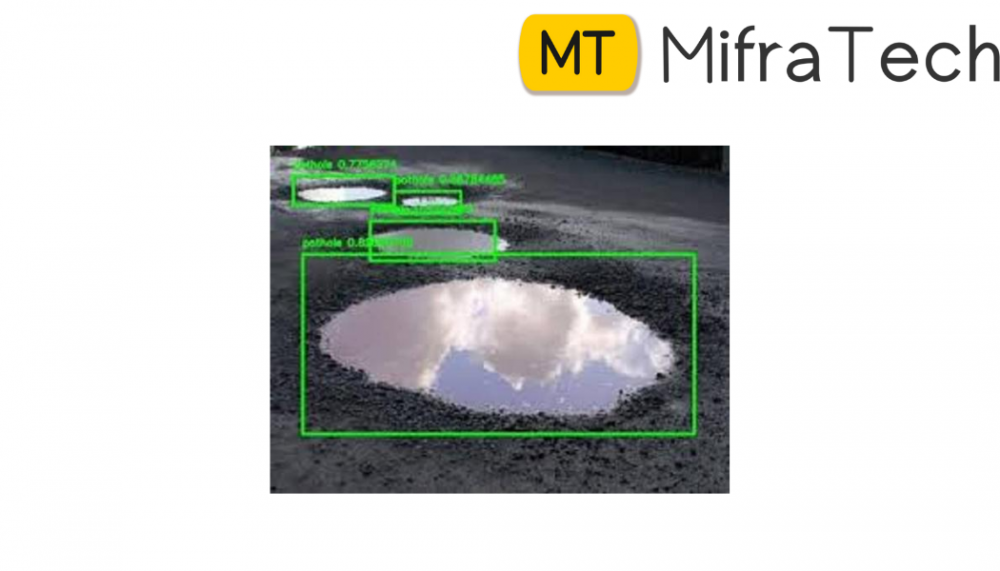
PATHHOLE DETECTION USING MACHINE LEARNING
Abstract :
Pothole detection is import to decrease accidents across the world. Many researchers have been done but they require some specific devices or tools to acquire sensor data. In this paper, we propose an any way to implement pothole detection using a Smartphone, and classification is performed using Transfer Learning. The experimental result shows that the proposed approach provides us efficiency from the view point of implementation and performance. A series of processing methods were applied to the collected data, and features from different frequency domains were extracted, along with various machine-learning classifiers. The results indicated that features from the time and frequency domains outperformed other features for identifying potholes. Among the classifiers tested, the Random Forest method exhibited the best classification performance for potholes, with a precision of 88.5% and recall of 75%. Finally, we validated the proposed method using datasets generated from different road types and examined its universality and robustness.
Introduction:
The number of vehicles drastically increases every year, and the number of accidents proportionally does too. The condition of road surface affects directly on our safety. The American Automobile Association estimated in the five years prior to 2016 that 16 million drivers in the United States had suffered damage from potholes to their vehicle with a cost of 3 billion USD a year. Road defects, such as potholes and cracks, are becoming an increasingly significant problem for roads around the world. They present a hazard for all road users, causing considerable vehicle damage. Consequently, the damage induced by potholes has resulted in expensive lawsuits and damage claims. Despite the large government investment made in maintaining and repairing road infrastructure, few people are satisfied with the quality of roads where they live or work.
Objective:
The main aim of this project to predict the PATH HOLE DETECTION using MACHINE LEARNING techniques and algorithms like SVM and RANDOMFOREST. It is written in Python, using libraries such as numpy, pandas. extracted by the website link entered by the user in the front end.
Problem Statement
In the previous researches, some specific devices and tools are needed to detect the status of roads, which causes some extra costs and inconveniences. In this researches, we introduce an efficient way to detect road distress using a mobile devices. In contrast to this Pothole Patrol (p 2 ) system, in most machine-learning methods for road inspection, the following processing steps are generally adopted. First, features of different domains are extracted from the preprocessed data via various approaches. Then, classification is applied to these features to identify road defects, and different types of anomalies are distinguished.
Proposed System:
Every movement should make different sensor values if we use some sensors including gyroscope and accelerator. Fortunately, almost all of the recent mobile smart phones have the two sensors, which is easy to handle and has advantages in the cost and efficiency. Therefore, we utilize a smart phone as a sensor to acquire movement information, and the sensed data will be fed into a classifier to detect the status of a road. There are two steps: learning and testing. In learning step, the hyper parameters in fully connected layer is tuned using some portion of data, and test is performed using the rest data to verify our proposed approach.
Machine-Learning Classification
Machine-learning utilizes data or experience to automatically optimize the performance of computer programs. Classification is one of the most important tasks in machine-learning. It involves using the model constructed with a training dataset to make predictions regarding the categories of items in the testing set. The object of this study was to use the vehicle vibration data collected by the Smartphone to find potholes via machine-learning; a substantial classification task. Considering that traditional machine-learning algorithms already have satisfactory classification capabilities with relatively low requirements for datasets compared to Neural Networks, in this paper, traditional classifiers such as Logistic regression (LR), SVM and Random forest (RF) were applied to the features extracted from various domains of vibration signals, and their performance was evaluated.
System Requirements:
System Requirements:
Hardware Requirement:-
• System :Pentium IV 2.4 GHz.
• Hard Disk : 500 GB.
• Ram : 4 GB.
• Any desktop / Laptop system with above configuration or higher level.
Software Requirements:-
• Operating system : Windows XP / 7
• Coding Language :Python, HTML
• Version :Python 3.6.8
• IDE : Python 3.6.8 IDLE
• ML Packages :Numpy, Pandas ,Sklearn, Matplotlib, Seaborn, Flask, PymySql.
• Image processing Algorithms: SVM AND RANDOM FOREST
• Other Requirements : Notepad, XAMPP Control Panel
Methodology
· A PATH HOLE Dataset is taken.
· The dataset is loaded and preprocessed with various MACHINE LEARNING techniques.
· The preprocessed data is divided as training and testing data.
· The prediction model is built using Image processing algorithms like SVM and RANDOM FOREST.
· The model is trained using training dataset and once the model has been trained successfully it has to be tested.
· The trained model is tested using testing dataset and accuracy is calculated.
· The algorithm which gives the best accuracy is taken as our final prediction model.
· The finalized model is converted into pickle model (binary format data) and saved.
· A Front End is developed with the help of Flask and HTML.
· Now user will enter the website link in the front end.
· The extracted parameters of the user entered website link in the front end are given as input to our finalized algorithm to predict whether the user entered website is phishing website or not.
· Finally the predicted output is displayed on the front end.
Note : Find the best solution for electronics components and technical projects ideas
keep in touch with our social media links as mentioned below
Mifratech websites : https://www.mifratech.com/public/
Mifratech facebook : https://www.facebook.com/mifratech.lab
mifratech instagram : https://www.instagram.com/mifratech/
mifratech twitter account : https://twitter.com/mifratech